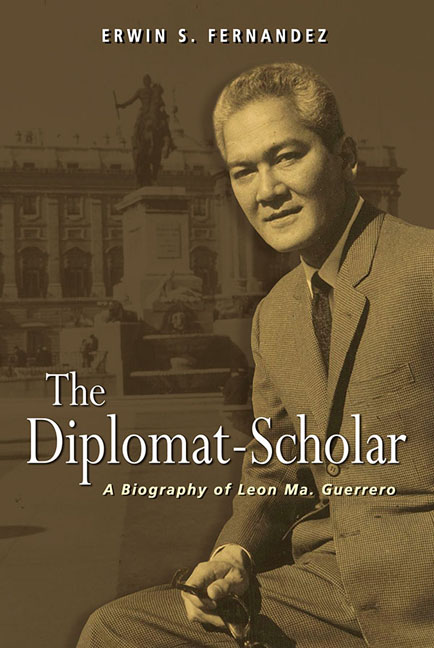Book contents
- Frontmatter
- Dedication
- Contents
- Preface
- Prologue
- Chronology
- I Ermita and Santa Cruz to Intramuros: Between Literary and Legal Career
- II To Tokyo and Back: The Making of a Diplomat
- III Going In, then Out of the Political Jungle: Padre Burgos to Arlegui
- IV London and Madrid: The Philippines in a Resurgent Asia
- V New Delhi to Belgrade: The Philippines towards Non-Alignment
- 18 Homecoming to Asia at Nehruvian India
- 19 “Diplomacy of Development” and Other Speeches
- 20 The Foreign Policy Rescuer and Again, Critic
- 21 The Diplomat as Efficient Intellectual-Bureaucrat
- 22 Endorsing Non-alignment amid Personal Crisis
- 23 Flirting with Dictators
- 24 Martial Law Propagandist
- 25 At Tito's Pre-Balkanized Yugoslavia
- Epilogue
- Glossary
- List of Abbreviations
- Bibliography
- Index
- About the Author
24 - Martial Law Propagandist
from V - New Delhi to Belgrade: The Philippines towards Non-Alignment
Published online by Cambridge University Press: 12 January 2018
- Frontmatter
- Dedication
- Contents
- Preface
- Prologue
- Chronology
- I Ermita and Santa Cruz to Intramuros: Between Literary and Legal Career
- II To Tokyo and Back: The Making of a Diplomat
- III Going In, then Out of the Political Jungle: Padre Burgos to Arlegui
- IV London and Madrid: The Philippines in a Resurgent Asia
- V New Delhi to Belgrade: The Philippines towards Non-Alignment
- 18 Homecoming to Asia at Nehruvian India
- 19 “Diplomacy of Development” and Other Speeches
- 20 The Foreign Policy Rescuer and Again, Critic
- 21 The Diplomat as Efficient Intellectual-Bureaucrat
- 22 Endorsing Non-alignment amid Personal Crisis
- 23 Flirting with Dictators
- 24 Martial Law Propagandist
- 25 At Tito's Pre-Balkanized Yugoslavia
- Epilogue
- Glossary
- List of Abbreviations
- Bibliography
- Index
- About the Author
Summary
Though on a tight schedule, Guerrero decided to develop into a booklet his thesis on the raison d’être of martial law he put forward in his New York Times article. Romulo launched Today Began Yesterday in Manila in early September 1975 and was issued as a newspaper serial in late September in time for the anniversary of the proclamation of martial law. Retitled later as Why Martial Law?, Guerrero justified the imposition of martial law in the Philippines, which he hoped would bring about reforms, using Philippine history as a backdrop beginning with the Philippine Revolution against Spain until 1972 in the context of Muslim secessionism and the CPP-NPA-orchestrated communist revolution. “One must seek in Philippine history,” he noted, “the nature of these reforms, political as well as social, and the way to bring them about best suited to the traditions and character of the Filipinos.” His thesis was that martial law, with its vision of a “New Society”, was a long overdue recognition of Rizal's call for “social regeneration” and Mabini's exhortation on “internal revolution”, which led Quezon to promote “partyless democracy” in a society Senator Juan Sumulong called “farcical representative government” reigned by “feared and detested oligarchy”.
What should the “New Society” accomplish? As if to remind President Marcos, he stated it would:
would face the task of redressing grievances that had been mocked in the past, and fulfilling desires and aspirations that remained frustrated; of redeeming the peasants from age-old bondage, and giving them the lands that the Revolution had promised; of ‘democratizing wealth’ and enlisting it to provide tolerable lives for the common people; of assuring equal progress for all in a just society without sacrificing the workers to the technocratic goals of full and rapid development at any cost; of reconciling the basic human rights and freedoms with the requirements of national discipline and security; of devising a form of representative democracy that would enable the ordinary Filipino, in his village, farm or humble tenement, to make his voice truly heard, and his will effectively participate in the great decisions of his government.
- Type
- Chapter
- Information
- The Diplomat-ScholarA Biography of Leon Ma. Guerrero, pp. 281 - 287Publisher: ISEAS–Yusof Ishak InstitutePrint publication year: 2017

